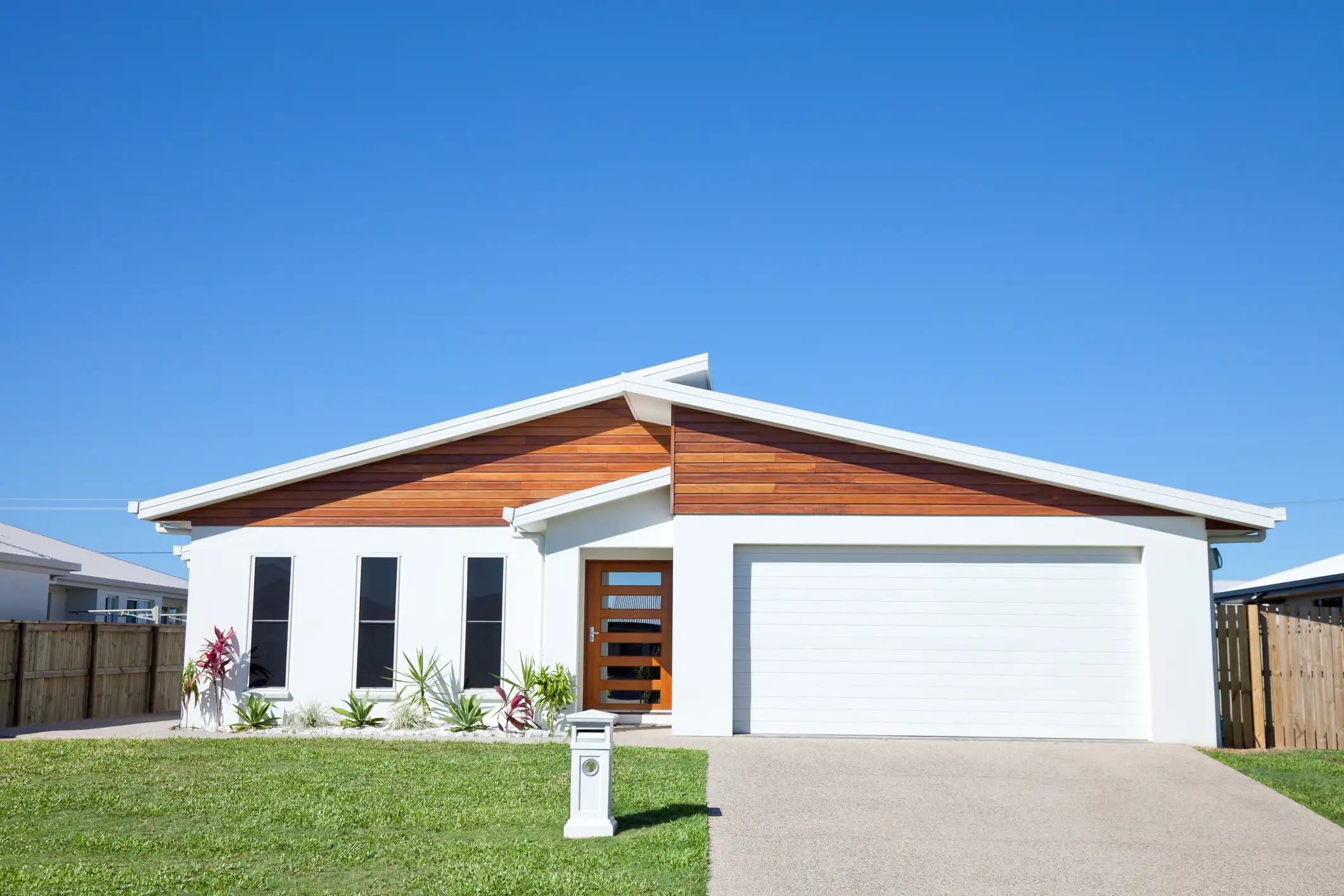Understanding private mortgage insurance


What is mortgage insurance?
Mortgage insurance, AKA private mortgage insurance (PMI), is a monthly premium that lenders charge when you put less than 20% down on a conventional loan.
Private mortgage insurance (PMI) explained
The first thing you should know about mortgage insurance is that it doesn’t protect you—it’s designed to safeguard the lender from financial loss. When buying a home, and a lender lets you borrow more than 80% of the home’s purchase price, they want compensation for taking on more risk in case you can’t pay them back. This rule also applies to refinancing if you have less than 20% equity in the home. Don’t confuse mortgage insurance with homeowners insurance, which has your back if your home or belongings get damaged.
The bright side of private mortgage insurance? You won’t have to pay it forever. By law, lenders must stop charging you for PMI once you’ve paid down your balance to 78% of the original loan amount, or when you get halfway through your loan’s term and are current on payments—whichever hits first.
Mortgage insurance premium (MIP) for FHA loans
If a conventional loan isn’t for you, an FHA loan can offer lenient credit requirements and down payments as low as 3.5%. FHA loans come with a mortgage insurance premium (MIP) instead of PMI. Both MIP and PMI protect the lender in the event you default on your loan, but they operate differently. A mortgage insurance premium has two parts: a one-time upfront premium plus an annual payment.
Mortgage protection insurance (MPI): Optional coverage
There’s one more acronym that might throw you for a loop: MPI. Mortgage protection insurance (MPI) is an optional policy that will pay off your mortgage when you die, so your loved ones won’t have to carry the burden of an unpaid home loan. Note that if you have a good life insurance policy, you probably won’t need MPI.
Mortgage insurance costs by loan type
PMI for conventional mortgages
So how much is mortgage insurance? It depends. PMI isn’t a flat fee—it’s usually 0.5% to 1.5% of the original loan amount annually. Most of the time, mortgage insurance is part of your monthly bill, with little to no required payment at closing.
Your financial stats influence how much a lender decides to charge you for PMI: the riskier your profile, the higher percentage you’ll likely have to pay. Let’s walk through some factors lenders will consider.
- Down payment: Even if you can’t afford 20%, a higher down payment could shave down your PMI costs.
- Credit score: A higher credit score shows you’re good at managing debts, which could get you a lower PMI rate.
- Mortgage amount: Larger loans are saddled with higher PMI costs since the lender is taking on more risk.
- Mortgage type: Adjustable-rate loans are riskier than fixed-rate loans, so they generally come with higher PMI costs.
MIP for FHA loans
Remember, if you have an FHA loan, MIP comes in two forms: the upfront premium and the annual payment. The upfront premium is a one-time payment of 1.75% of your total loan. Usually this is paid upfront, but it can also be tacked onto your loan balance.
Your annual MIP will be 0.45% to 1.05% of your loan balance, divided up over your monthly payments. If your down payment is less than 10%, you’ll be stuck with the annual premium for the entire loan term. Heads up: You usually can’t cancel MIP unless you refinance to a different type of loan.
USDA Guarantee fees
If you’re hoping to cozy up in the countryside, a USDA loan requires zero down payment. You won’t pay mortgage insurance if the property is in an eligible USDA area, but you will owe an upfront guarantee fee and an annual fee. These fees essentially work as mortgage insurance for USDA loans, protecting lenders from default and keeping the program in action.
These fees can fluctuate yearly, but the law sets firm limits: the maximum upfront fee is 3.5% of the loan amount and the annual charge can’t exceed 0.50% of the unpaid principal balance.
VA funding fees
If you’re a veteran, an active service member or a surviving spouse, a Veterans Affairs (VA) loan might be your best no down payment option. Instead of PMI, you’ll owe a funding fee, which is a small percentage of the total loan, typically 1.25% to 3.30% of the loan amount. Even though a down payment isn’t required, you may want to bring some cash to the table: the higher your down payment, the lower your funding fee will be.
Strategies to avoid mortgage insurance
Making a 20% down payment
Putting down 20% is a surefire way to keep mortgage insurance at bay. Saving up 20% is no easy feat, so it’s important to weigh the pros and cons: do you want to get into a home now and start building equity, or would you rather keep saving to avoid the cost of mortgage insurance? If home prices are surging, mortgage insurance might be cheaper than waiting to buy.
Utilizing piggyback loans (80/10/10)
A piggyback loan could help you avoid mortgage insurance if you have a 10% down payment. Also known as an 80/10/10, this involves two loans: one covering 80% of the home’s price and the other covering 10%. Proceed with caution here, as juggling two loans can end up costing more than PMI in interest and closing costs. Plus, it could be difficult to refinance a mortgage if you have a second mortgage.
Exploring government-backed loans
Take a closer look at conventional loan alternatives like FHA, VA and USDA loans, which can help make homeownership more affordable. See if you qualify for one of these government-backed loans so you can avoid paying PMI.
Considering lender-paid mortgage insurance (LPMI)
You can build the cost of your mortgage insurance into your mortgage rate with lender-paid mortgage insurance. You won’t be charged a monthly PMI payment, but you will pay a higher rate for the life of your loan. Your credit score and down payment are key components in determining the increase in your rate, so you’d need to do the math to determine the more affordable option: paying mortgage insurance or paying the higher rate.
How to remove mortgage insurance
Automatic cancellation at 22% equity
Your lender is legally required to cancel PMI once you reach 22% in home equity, or one month after your loan’s midpoint (say 15 years into a 30-year loan) and you are current on your payments. This doesn’t require action on your part, but there are more proactive ways to save. Note that this doesn’t apply to the mortgage insurance premium on FHA loans.
Requesting cancellation at 20% equity
Mark your calendar for the day you hit 20% equity in your home. That’s when you can write to your lender or loan servicer and request that mortgage insurance be taken off the bill. You’ll need to be current on your payments and have a healthy payment history to qualify for PMI cancellation.
Refinancing to eliminate MIP
If you have an FHA loan and want to say goodbye to mortgage insurance premiums for good, you may want to refinance to a different loan type. You can test the refinance waters and run through different rate and term scenarios using our Refinance Calculator.
Cancel PMI through home appreciation
If your home has appreciated in value due to market conditions or big renovations, you might have more home equity than you think. You can ask your lender for a new appraisal of your home’s worth for a few hundred bucks. They’ll compare your remaining loan balance to the home’s appraised value to determine how much equity you have. Depending on how long you’ve been in the home, you may need to reach 25% equity to cancel PMI.
Comparing mortgage insurance options
PMI vs. MIP: Key differences
| Private mortgage insurance (PMI) | Mortgage insurance premium (MIP) |
|---|---|
| For conventional loans | For FHA loans only |
| Only required with down payment of <20% | Required for all FHA loans regardless of down payment size |
| Monthly payments | Upfront premium and annual payment |
| Can be cancelled at request once 20% equity is reached | Can’t be cancelled if you put less than 10% down |
| Cost of PMI varies based on multiple factors | Cost of MIP is more standardized and less influenced by borrower’s financials |
| Lower initial loan-related costs compared to MIP’s upfront premium | Qualifying is easier for borrowers with lower credit scores and smaller down payments |
Pros and cons of each option
Private mortgage protection insurance for conventional loans
| Pros of PMI | Cons of PMI |
|---|---|
| Allows for down payment of <20% | Increases monthly mortgage payment |
| Helps first-timer buyers and those with limited savings qualify for a mortgage | Protects only the lender, not the buyer |
| Allows buyers to purchase now and build equity instead of waiting to save | Adds to long-term loan costs without building equity directly |
| Cancelled automatically once owner reaches 22% equity | Depending on lender, requesting PMI removal can be cumbersome |
Mortgage insurance premium for FHA loans
| Pros of MIP | Cons of MIP |
|---|---|
| Allows for down payment as little as 3.5% and lower credit scores | Mandatory for FHA loans regardless of down payment size |
| Helps first-time borrowers and those with lower income | Required for entire loan term if down payment is <10% |
| May be refinanced to a conventional loan to remove MIP | Upfront premium plus annual fee add to total cost of loan |







